After 6 years of being in the market, we test the HyperX Cloud II to see if they can still stack up against the newer gaming headphone models today.
With thousands of video games released every year, gaming companies are pushed to keep up with the fast-changing demands of the market. And that includes gaming headphone manufacturers.
Before, having a good enough sound was okay. Yet now, gamers have a choice to go for headphones with technologically advanced features. It can be a decent surround sound feature, haptic feedback, low latency wireless connection, or simply some accessible controls.
But despite the new headphone models with these advanced features released in the market, one specific model remains standing — the HyperX Cloud II. Released in 2015, these popular headphones helped HyperX become the top-selling brand for gaming headphones from 2017-2018, and reach its milestone of 10 million headphones sold in 2019.
However, 6 years after their release, the question has to be asked: are they still as impressive as they were before? Can they still compete with the newly released headphones today? And, considering their built-in tech, are they still worth their price?
Find out with our full review.
- Comfortable even if the paddings are not very thick
- Outstanding build quality that feels premium and sturdy
- Detachable microphone makes the headphones more portable
- Cable is at just the right length
- Accessible controls via the USB sound card
- Balanced and detailed sound
- Bulky design
- The extra velour paddings are uncomfortable
- The sound card only connects through USB
- Disappointing 7.1 surround sound
- Underwhelming noise-cancelling microphones
- Outdated technology and features for its price
Company Overview
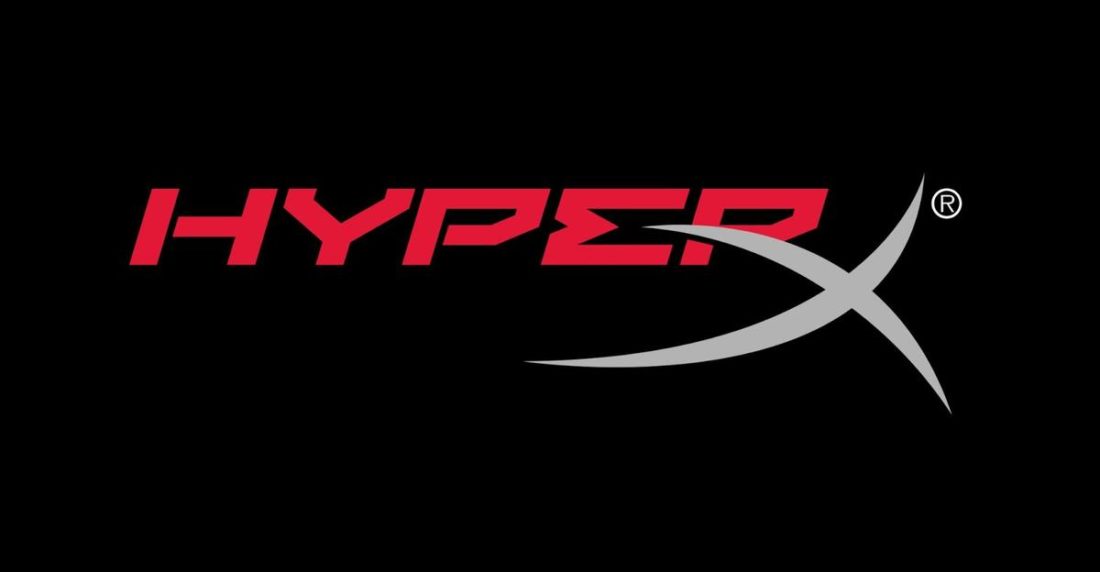
HyperX is a brand of headphones, SSDs, and other gaming paraphernalia under Kingston Technology Corporation. Kingston is one of the most iconic brands when it comes to computer-related memory products and they started HyperX in 2002 to cater to the growing demands of gamers.
For almost two decades, HyperX has grown to become one of the most active brands in professional gaming. Currently, the brand sponsors 20 gaming teams globally and is involved in numerous gaming events such as the Intel Extreme Masters and DreamHack.
The first headphones that the brand released are the HyperX Cloud back in 2014. Since then, all of the succeeding releases were under this line, namely the Cloud II, Cloud Stinger, Cloud Buds, and the like. There are currently 13 models of HyperX headphones that are available to the public as of the moment.
Technical Specifications
- Form: Over-ear, Closed-back
- Drivers: Dynamic Ø 53mm with neodymium magnets
- Impedance (Ohm): 60 Ohms
- Frequency Range: 15Hz–25kHz
- Maximum Input: 150mW
- Speaker Sensitivity: 98dB
- Mic: Yes; Detachable Cardioid
- Mic Sensitivity: -39dB
- Ear Pads: Leatherette Memory Foam
- Source Plug: 3.5mm with USB 2.0 sound card
- Detachable Cable: No
- Cable Length: 3.2 ft.+ 6.5 ft. USB sound card
- Weight: 350g
- Compatibility: Playstation 4, Playstation 4 Pro/Slim, Xbox One, Xbox One S/X controller, Nintendo Switch/3DS, PSP, Tablet, Mac, iPad, Laptop, PC, Mobile Phones
Packaging
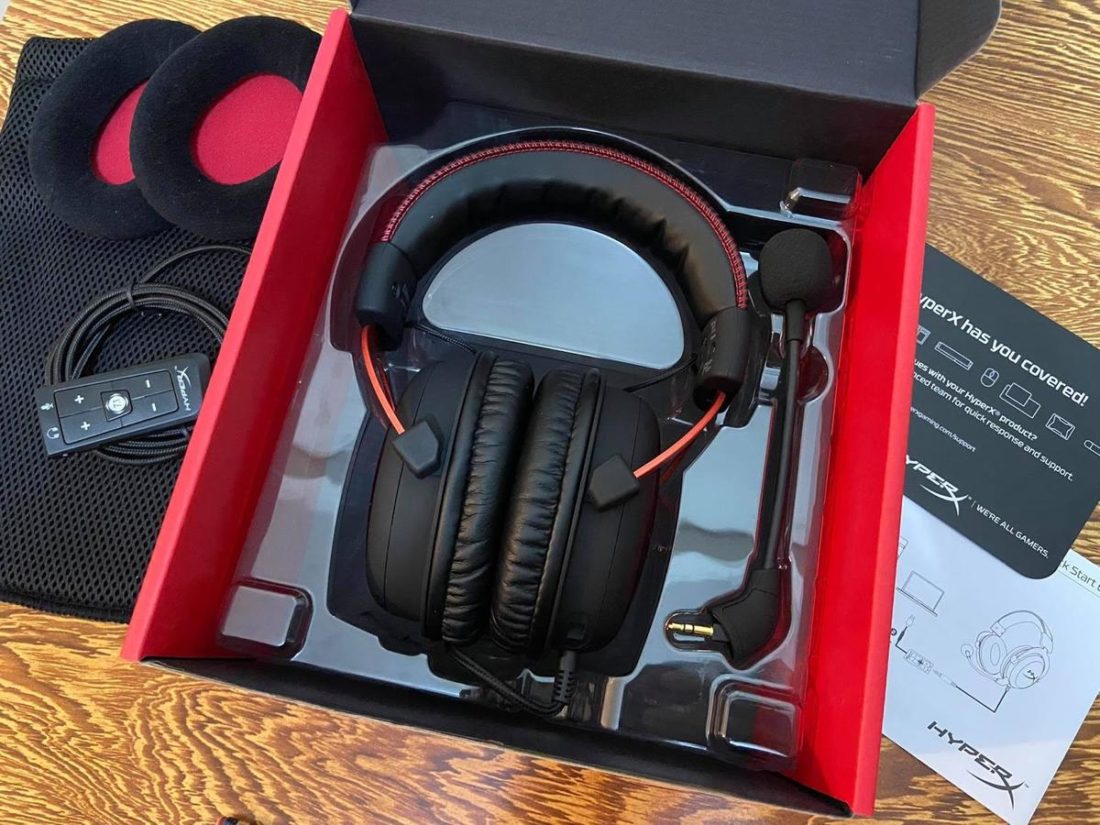
The box is admittedly bulky but, personally, it made me feel like I was getting more at first glance. This is because of the premium feel of the matte box and how organized the headphones and detachable mic look.
However, I’m not a fan of their decision to use plastic casing to hold the headphones and mic in place. And, knowing that they used to come with a molded foam instead of a plastic casing just makes me confused with why HyperX made this packaging change.
Also, the extra ear cups seem to be placed clumsily while the travel pouch and the sound card do not even have any slots. These factors make the packaging feel rushed and cheap.
For its price, these headphones’ packaging isn’t too fancy. And, this may just prove that these headphones are not exactly high-tier.
In the box
- HyperX Cloud II
- Detachable microphone
- USB sound card
- Additional velour ear cushions
- Travel bag
- Documents
Design
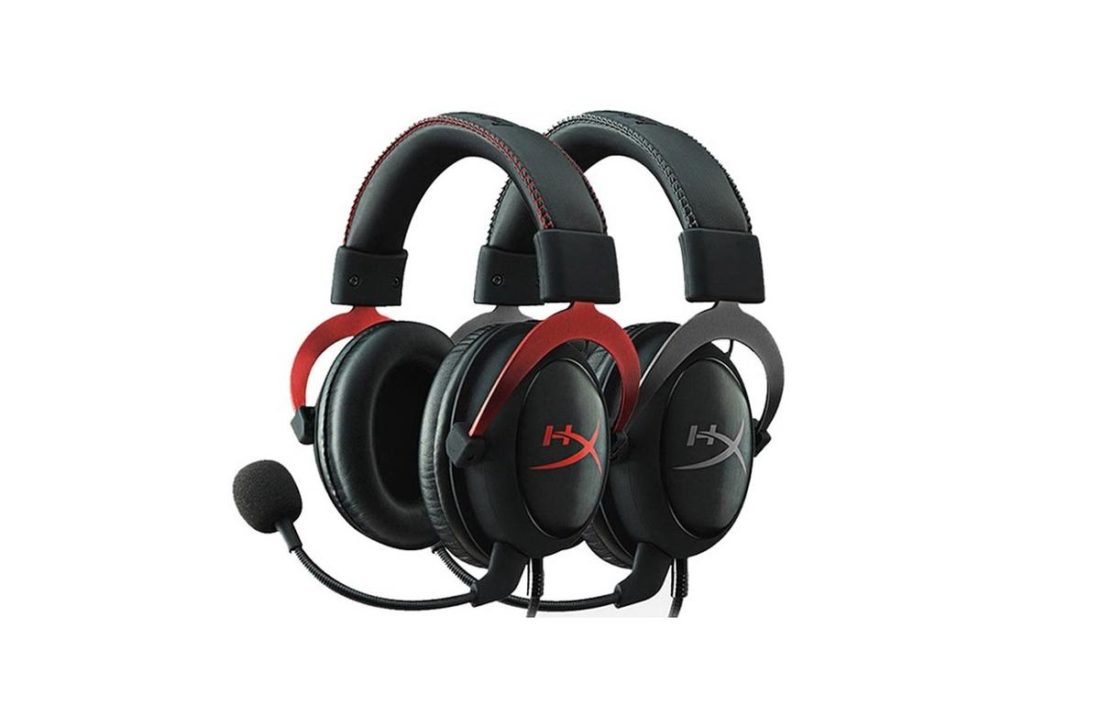
First things first, these headphones look a lot more compact than expected. The rounded closed-back earcups give them a more stylish look. In fact, they looked more like studio or travel headphones at first. However, they transformed into classic-looking, albeit a bit bulky, gaming headphones once I attached the microphone.
I got the red variant of the Cloud II which only signifies red accents. About 90% of the headphones are still clad in black and the only parts colored in red are the HyperX logos on the earcups, the steel frame, and the exposed stitches on the headband.
I wouldn’t really call the Cloud II’s design sleek. Compared to something like the Razer Kraken X, the Cloud II headphones have a more rustic design with the exposed stitches and the threaded wire that stems out from the earcups into the headband.
The ear cups are lined with quarter-inch memory foam padding while the headband’s padding is about the same thickness as well. This should catch the attention of those who are not really into overly-padded headphones.
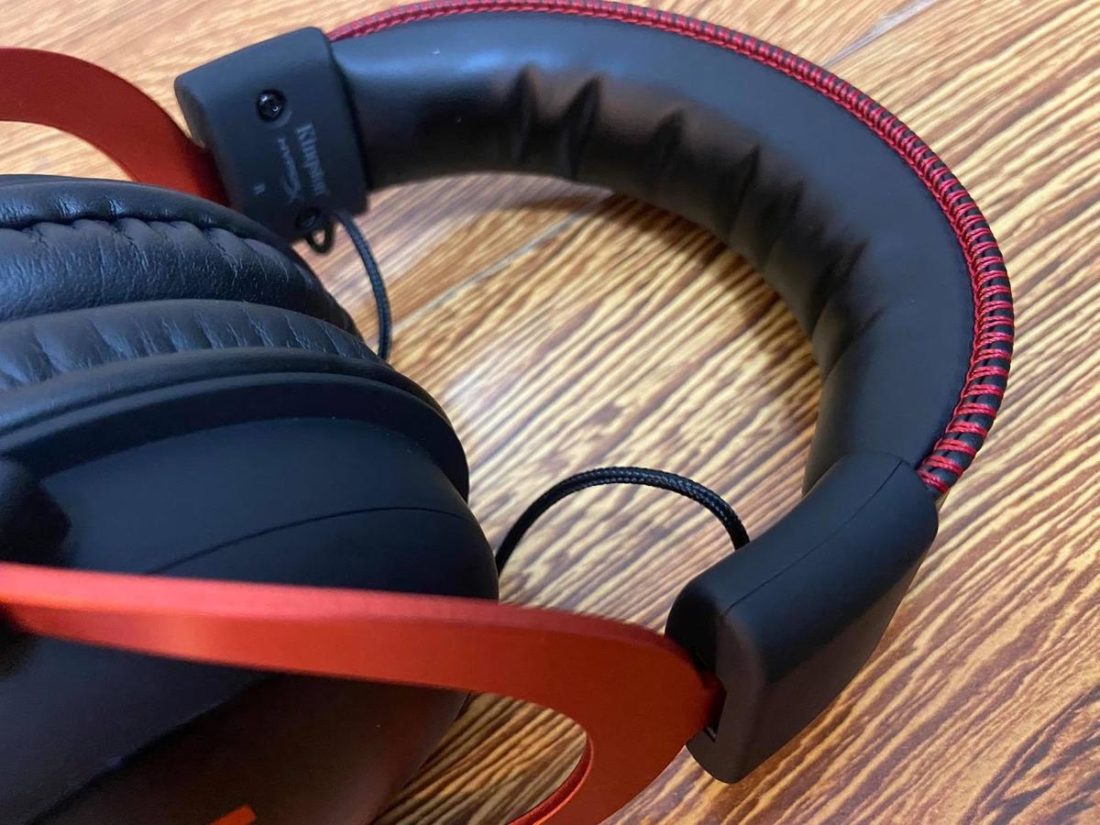
The design of the Cloud II is basically a carbon copy of its predecessor. Their design might have been ahead of its time back in 2015 but a lot of other brands have innovated and veered away from this industrial look already, so we’ll just call them a classic.
Overall, I can’t really say that I’m a fan of the Cloud II’s design. While they do have that classic and functional look, I’m simply more into sleeker designs and headphones that look like they were made from a single block.
Connectivity
The HyperX Cloud II feature a non-detachable 1-meter braided nylon cable which is around 3.2 ft. Compared to most of the mainstream gaming headphones today, this 1-meter cable is relatively short but I actually prefer it like this. It isn’t too long to get caught in different objects around the room and it also isn’t too short to limit movements.
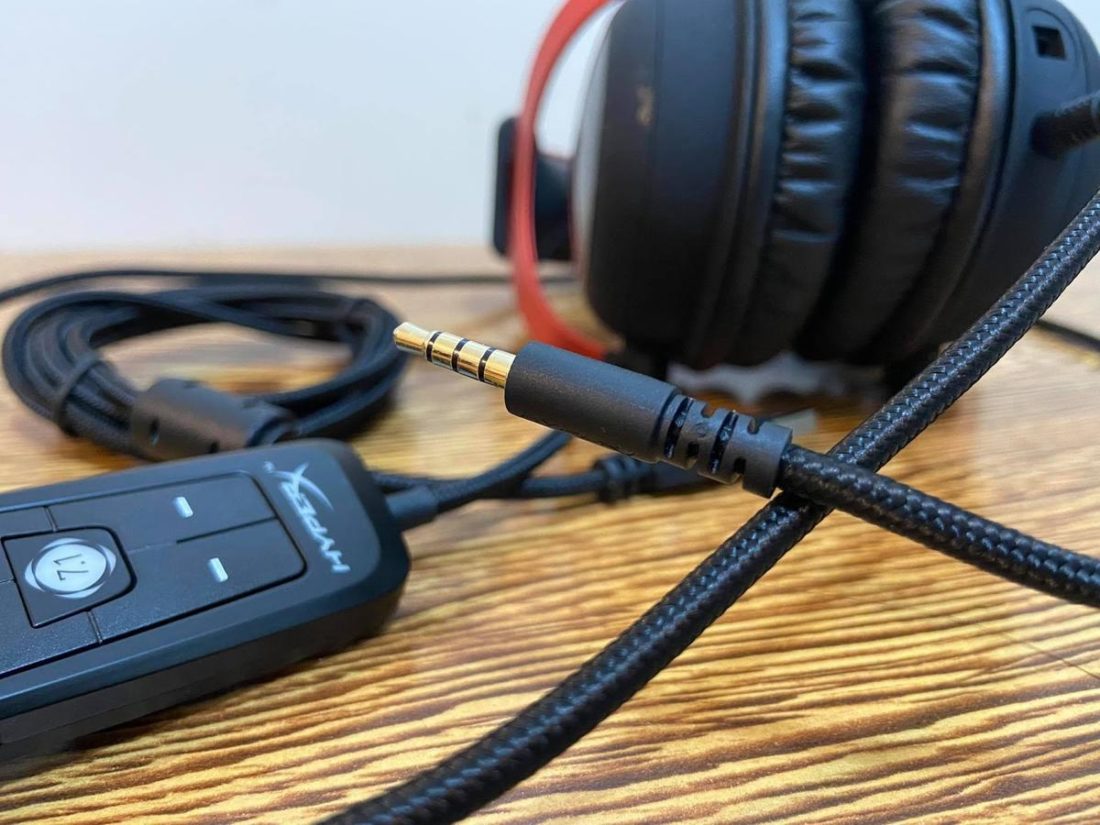
The headphones also come with a USB 2.0 sound card with a length of 2 meters or roughly 6.4 ft.
Unfortunately, the key functions are permanent and HyperX does not have a dedicated app of some sort to map the keys.
The HyperX Cloud II are compatible with all major gaming devices. As long as your device has a 3.5mm or USB port, you’ll be able to use these headphones.
Unfortunately, if you want to use the sound card, you need to attach the 3.5mm jack to the sound card and plug in the USB 2.0 connection to your device instead. That means, you can’t use the sound card whenever you need to connect via the 3.5mm jack.
Moreover, the main cable of the headphones does not have inline controls and the sound card is the only way to gain external control over the headphones.
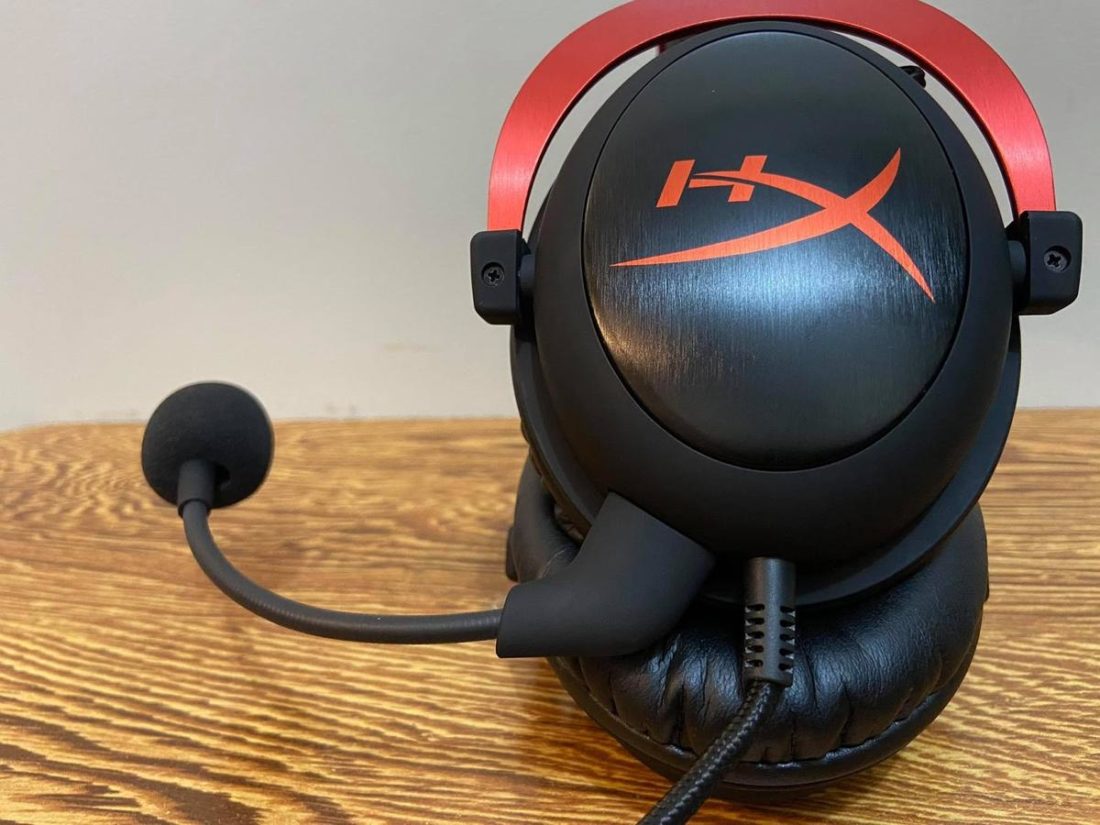
Build Quality
The HyperX Cloud II are not exactly light at 350g, but they’re also not unbearably heavy. If you’re someone like me who likes lightweight headphones, it might take you some time to consider the HyperX Cloud with its weight.
However, you still shouldn’t cross the HyperX Cloud II off your list right away just for its weight. That’s because with great weight comes great build quality.
One material dominates the HyperX Cloud’s build: aluminium.
The frame of the headphones is made out of aluminium. This aluminium frame is responsible for the headphones’ weight but they also accentuate the durability of the Cloud II. This also gives the headphones a safer feel for flexibility compared to plastic builds that feel as if they could snap anytime.
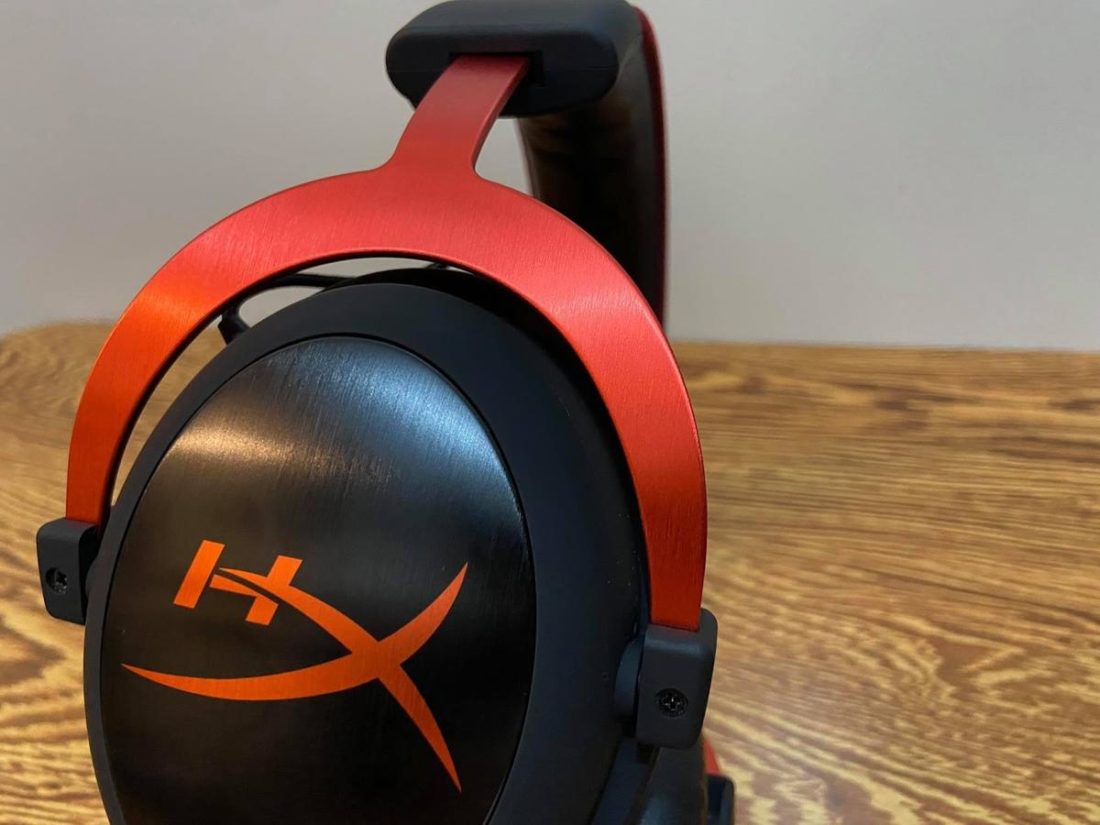
The rubber-matte hard plastic ear cups, on the other hand, adds to the premium feel the aluminium frame offers.
The Cloud II have a solid build and that’s something that I really liked. You can knock anywhere on the headphones and you won’t hear a hollow sound because everything is just compacted nicely inside.
The paddings that come with the headphones right out of the box and the headband are lined with leatherette. This makes the headphones look and feel premium. However, the extra foam-type ear pads are totally opposite and having them on did not help the Cloud II’s build quality rating at all.
Overall, I think the build quality is one of Cloud II’s redeeming qualities. I may not be a big fan of how they look, but how premium they feel is a different story.
Comfort
As I would usually say, comfort varies from one person to another because we all have different standards for it. In my case and in the case of the HyperX Cloud II, comfort is generally good but the age of the headphones become apparent in some areas.
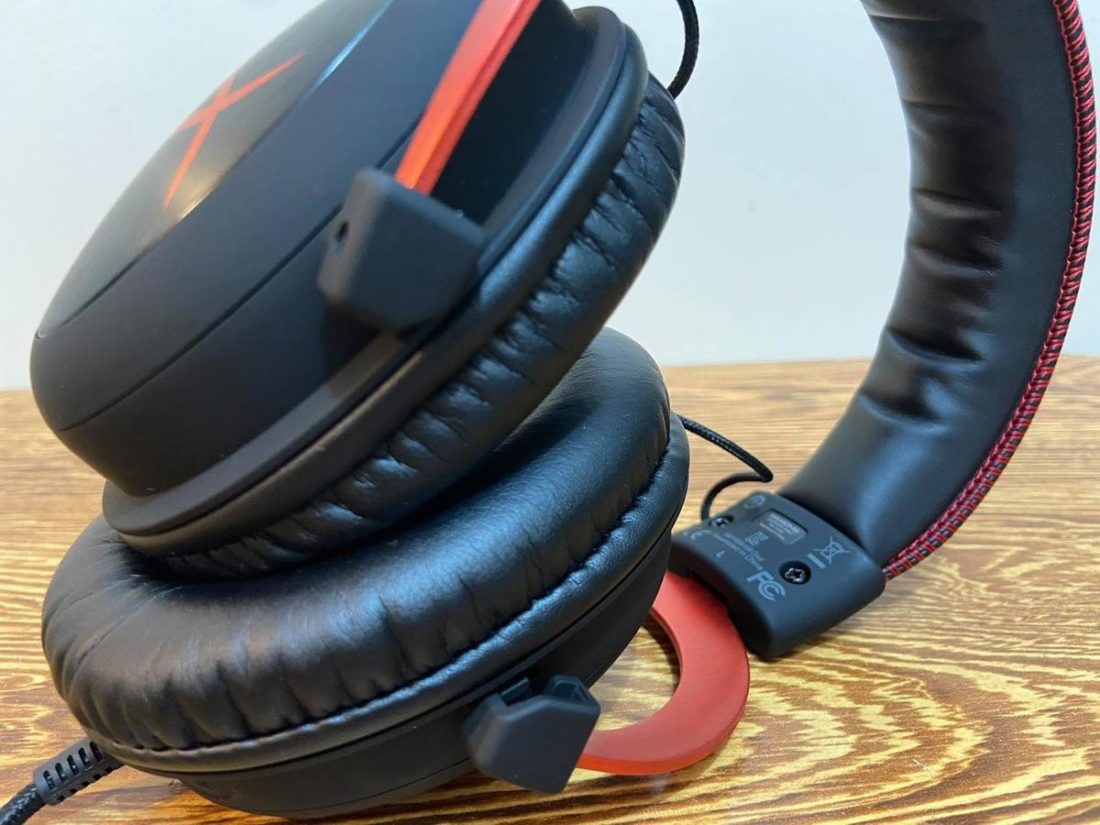
With the HyperX Cloud II’s quarter-inch padding amounting to a quarter of my sizing standards, I was quite worried about whether I would find these comfortable enough. Well, needless to say, I was quite surprised.
What these headphones’ paddings lacked in size, they made up for in material quality. The leatherette did not retain too much heat while the memory foam earpads were outstandingly comfortable.
However, the headphones do not have an eyewear channel for people who wear glasses and this is where the headphones start to show their age. Nonetheless, I didn’t feel any pain and I think the memory foam should get credit for that.
For a pair of ear cups that rotate for about 40 degrees only, they were surprisingly not uncomfortable when hung from your neck.
Yet, because the ear pads aren’t that thick and the clamping force isn’t that tight, they have a tendency to slowly slip down. I would find myself adjusting the headphones from time to time to bring them to their comfortable position.
Also, while I did appreciate the inclusion of the extra foam paddings, I could not help but say that they were horrible. They were too soft to offer any isolation between my ears and the hard surface of the earcups. I can’t think of a good reason to have them on as your main earpads really.
Mic Quality
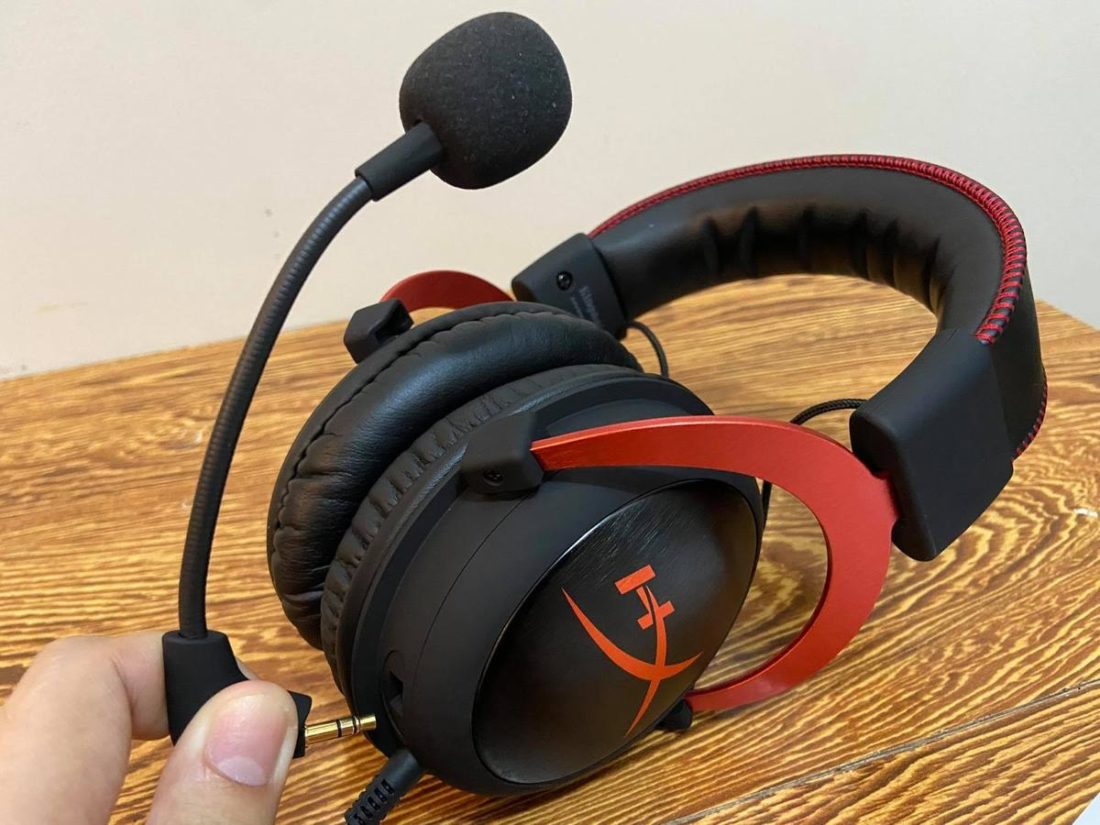
The HyperX Cloud II features a detachable cardioid mic with a flexible metal arm and a foam windscreen.
The microphone produces a clean but compressed sound. I played a couple of games with my team using these headphones and I didn’t have any troubling concerns. My speech was easily understood, and its compressed sound emphasized clarity since there was no echo at all.
Additionally, being a cardioid mic, this can easily block out external sounds and I also like how its flexible arm properly stays in place when you bend it.
It also easily muffles small sounds such as keyboards and light taps.
Yet, while their mic noise-cancellation was ahead of its time when they were initially launched, I can’t say that they remain competitive these days.
The Cloud II struggles to cancel high-pitched sounds and is not that smart in distinguishing low or soft voice against noise. I usually have a low-pitched voice and, while testing, I noticed some gaps in my speech when I recorded myself with ambient noise. However, when I spoke up with a higher tone, the Cloud II’s voice cancellation got a lot better.
Overall, the microphone wasn’t that impressive. This might have blown minds back in the day but the rest of the industry has clearly caught on with the Cloud II’s mic.
Here are some voice recordings I took to help you hear how the HyperX Cloud II’s microphone performs:
Sound Quality
The HyperX Cloud II features dynamic 53mm drivers which, on paper, should be good. The large drivers should provide better intensity for a more immersive gaming experience — and they honestly were. However, if we were to talk about functionality, the Cloud II wouldn’t be my best bet.
To test these headphones out, I played Apex Legends on PS4 and Valorant on PC. Right off the gate, the HyperX Cloud II showed that they were clearly one of the most detailed ones out there — and loudest if I may add.
Minute actions such as slides or jumps were as clear as day. They were very immersive and you would really have a pleasant gaming experience hearing sounds you probably haven’t heard as detailed before.
Comms were good on the HyperX Cloud II as well. I heard my teammates well and steadily and that’s about everything you could really ask for from a pair of gaming headphones.
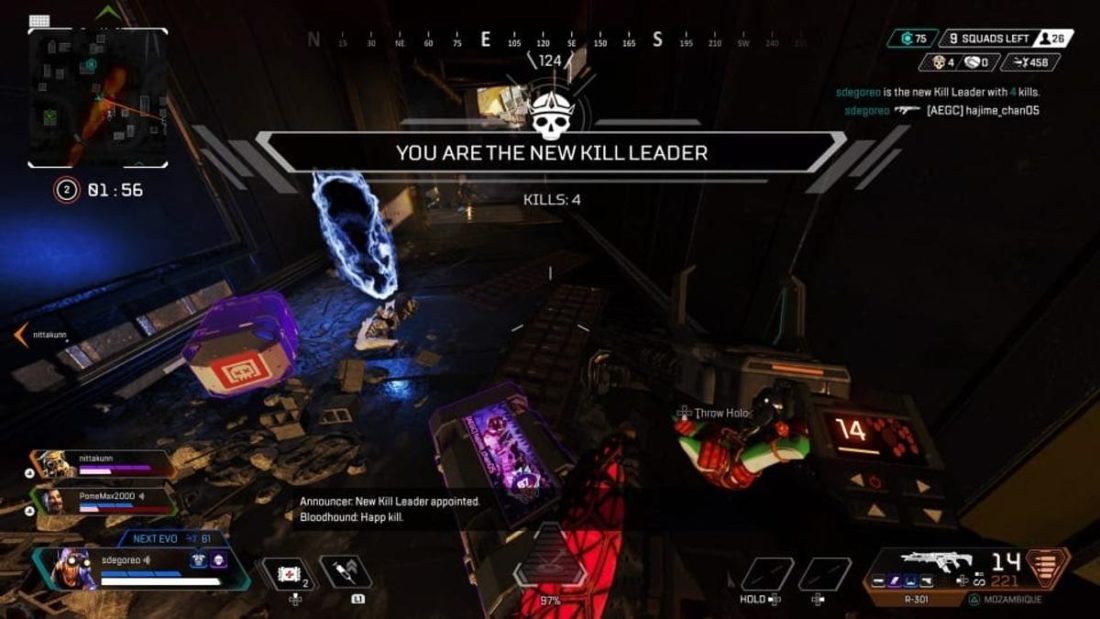
As for the sound properties, the bass was apparent but not overly powerful. On top of that, the mids and highs were also balanced, which is what I would usually prefer. No sound overpowered another and I was able to hear every detail right away. Because of that, I was able to keep my in-game reactions in check.
However, the biggest disappointment is perhaps its 7.1 surround sound. When I turned it on, the surround sound was almost non-existent and all it really did was to make everything louder.
The Cloud II’s surround sound was of no help and it didn’t make much of a difference having them on in-game. Clearly, this is where the Cloud II shows its 6-year age because surround sound technology has come a long way in gaming headphones since then. In fact, some budget headphones have better surround sound than this one already and I think that’s a big thing.
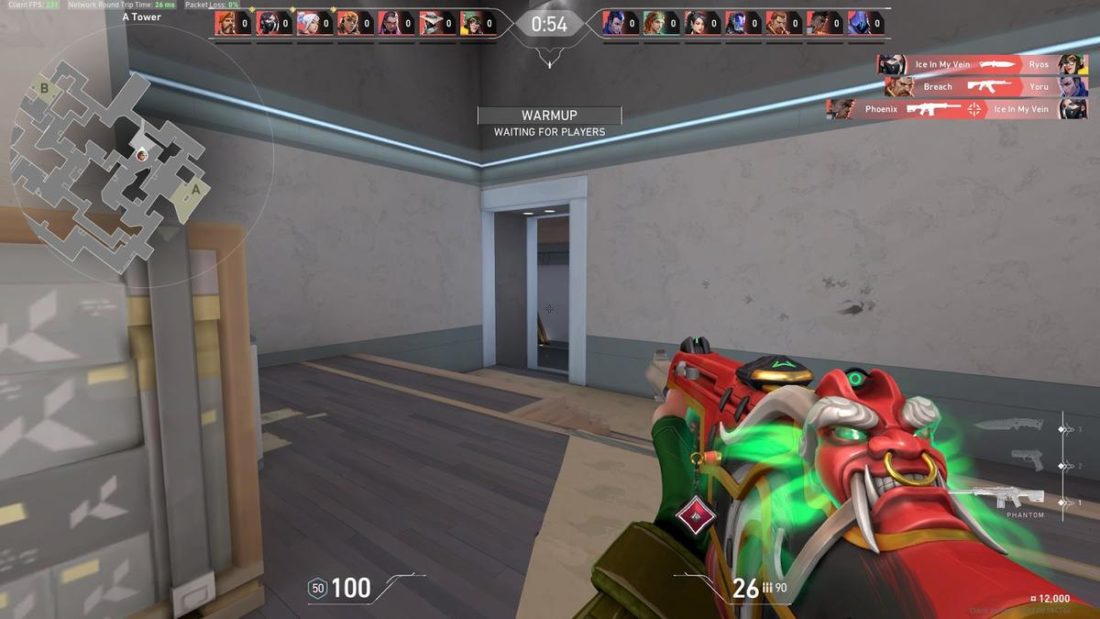
Overall, barring the underwhelming surround sound, the HyperX Cloud II’s overall sound quality is still pretty decent. It’s one of the most detailed and loudest ones you can get out there and we can thank the 53mm drivers for that.
So if you’re playing non-FPS games such as NBA 2K21, Dota 2, or Fall Guys, the Cloud II would be a great choice. With these games, you wouldn’t have to worry about the surround sound affecting your performance.
Comparison
The HyperX Cloud II has been around for almost six years now and a lot of comparable headphones have been released since then. The Cloud II stands in a unique position among gamers. They are respected as headphones that raised the standards, but a lot of headphones have been reaching that bar already today.
With that, it’s just right to compare the Cloud II with some of the other budget-friendly gaming headsets — the MPOW Air SE, and the Razer Kraken X respectively.
HyperX Cloud II vs MPOW Air SE
Since the first HyperX Cloud is now out of the market, a more apt comparison for the HyperX Cloud II, would be the MPOW Air SE. These budget headphones cost almost only half of the Cloud II and were released in 2020. So, if you want to be critical about it, the HyperX Cloud II are only almost as good as an excellent pair of budget headphones nowadays.
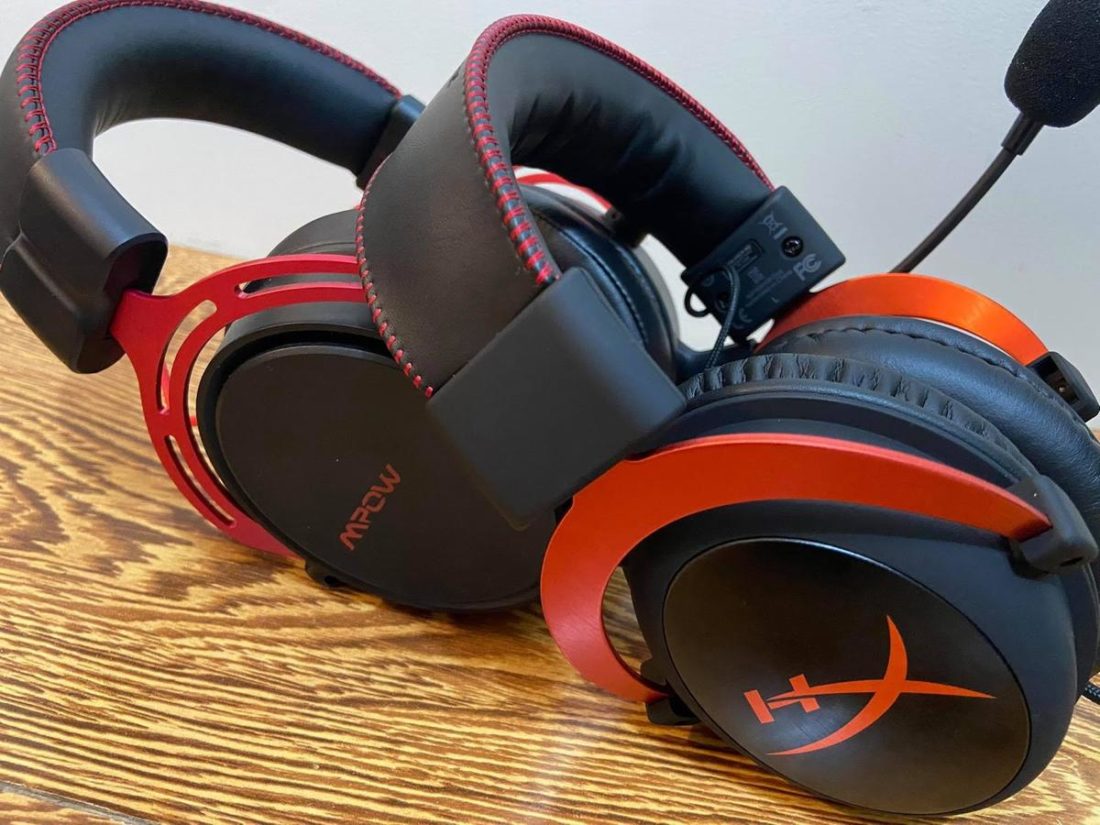
I also happen to have the red and black version of the Air SE so I was really able to focus on the form and build quality when comparing them. Well, the Cloud II definitely felt a lot more premium and it had a more sturdy build.
They both feature leatherette and memory foam earpads, but the Cloud II again felt a notch higher in terms of material quality. The Cloud II also had thinner ear cups and were far less bulky compared to the Air SE.
Now for the sound, they both feature underwhelming surround sound technologies but the Cloud II had better overall sound quality and balance. You would undeniably have a more immersive gaming experience with the Cloud II.
The microphone is a close call for both headphones. They both feature flexible cardioid noise-cancelling mics. The MPOW’s mic, though, won’t stay in place when bent unlike Cloud II’s.
Overall, the fact that the HyperX Cloud II are now comparable to the MPOW Air SE is quite concerning for the guys from Kingston. In the end, though, the Cloud II out as the better one by a level.
HyperX Cloud II vs Razer Kraken X
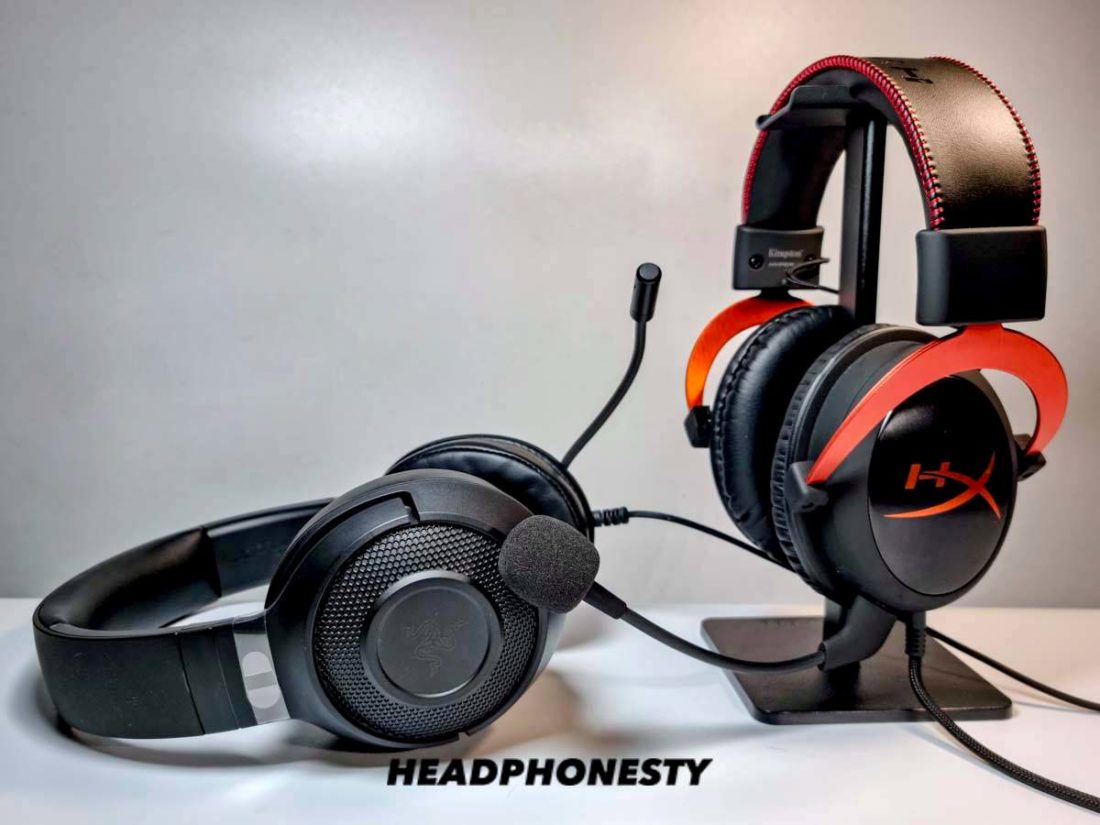
The Razer Kraken X’s strong points are the Air SE’s weak points and vice versa. With the Cloud II being like an upgraded version of the Air SE, it was intriguing to find out how this HyperX vs Kraken matchup would play out.
Design-wise, I would have to give it to Kraken X. They have a sleeker and more compact design, plus they weigh 100g lighter than the Cloud II. The Kraken X just looked so much more modern than the Cloud II.
However, even if the Kraken X feature thicker ear paddings, the Cloud II were much easier on the ears and clearly had better materials. The build quality of the Cloud II was also miles away from the flimsy Kraken X.
The big story for me, though, is the surround sound of the two. The Cloud II feature underwhelming 7.1 surround sound while the Kraken X have one of the best surround sound integrations I’ve heard. Even the lighter and cheaper Kraken X Lite version have better surround sound than the Cloud II and that’s saying something.
Fortunately, the Cloud II have a better mic and overall sound quality. Their audio input and output were much cleaner and balanced. The Cloud II also feature a slightly better noise cancellation for their mic.
Where to Buy
Conclusion
6 years after its release, the HyperX Cloud II are still alive and kicking. These headphones have climbed the top of the industry back then but are slowly losing to father time already. But while they may not be cutting-edge anymore, they are rightfully becoming the iconic classics that they were meant to be.
The HyperX Cloud II are well-built and are still the same ol’ reliable comfortable gaming headphones that they were back then. Plus, their sound quality remains to be as detailed as ever.
But, the gaming industry is a fast-growing one and gaming tech develops exponentially in months. That’s why, much like all headphones that are challenged by time and progress, the HyperX Cloud II’s tech is already lagging behind.
Their noise-cancelling microphone and surround sound features are almost just as good as headphones that come at half of their price.
With this in mind, we’re getting a sense that you’re paying more for the brand experience already rather than its actual features. It is as if they are still worth buying because they are icons in the industry, instead of their functionality
While this is not necessarily bad right now, this might take a sour turn in a year or two. Soon enough, the Cloud II will reach the point where its name and brand won’t be enough to justify its price tag already.
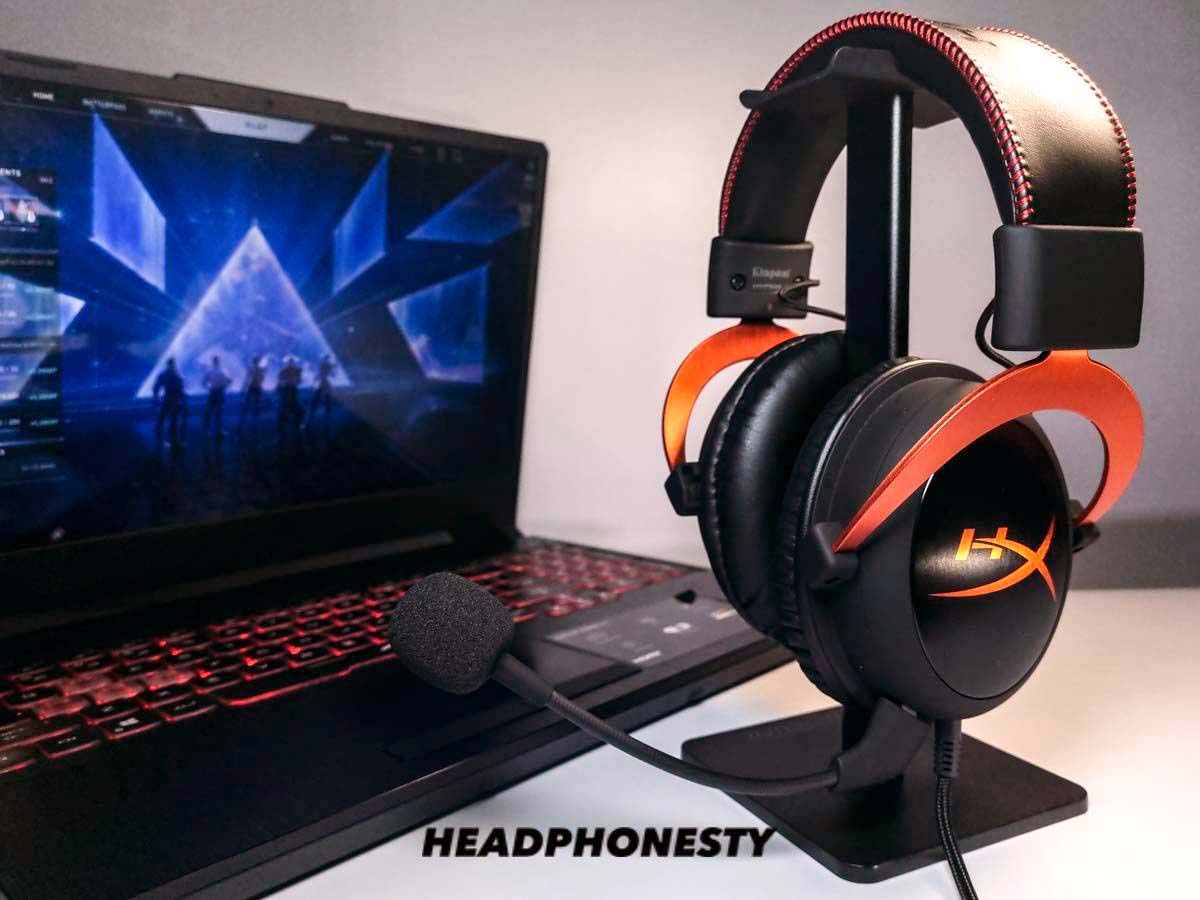
Buenas revisiones. Ningún jugador serio de FPS tiene en cuenta ningún tipo de sonido envolvente (solo distorsionan y ensucian el sonido). El Cloud II fue superado en calidad de sonido por el Cloud Alpha, esa es la verdadera referencia. Y actualmente se los encuentra a muy buen precio, mas cuando hay ofertas. Los tengo hace 4 años y medio, aunque hace ya dos años los reemplacé por unos ATH-AD500X que son MUY superiores a cualquier audífono para juegos. Saludos.